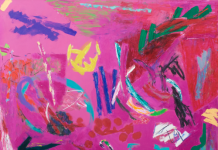We encounter thousands of colours a day, each of which has a varying effect on your emotion, and it appears that depends on what region you are from.
For the people of Manchester, their favourite living room colour scheme is either red or blue (3% more than the UK average) and they are 6% more likely to purchase a blue sofa in comparison to the rest of the UK.
Famous for its two premier league football clubs, it’s no surprise there is an interesting split between the preferences for the red and blue colours associated with the teams.
The recent study commissioned by DFS also found that grey tones were popular choices, with 42% finding it made them feel happier.
The unique study revealed precisely why people intrinsically prefer certain colours, with the people of Manchester leaning towards a mix of vibrant and neutral colour schemes because they were associate with feeling calm comfortable and happy.
The Colour Match Experiment was commissioned to explore the nature of people’s psychological relationship with colour and ultimately discover how colour impacts people’s mood and emotions in the home.
In comparison to the rest of the UK, people in Northern Ireland (17% more than the UK average) and Yorkshire (10% more than the UK average) also had a preference for red. The North West was where blue was most popular (3% more than the UK average) and in the East of England pink came out on top (19% more than the UK average).
Helen Leigh-Jones, Design Director at DFS, said: “For many of us, it’s really important to create a living space that looks great from a style perspective and allows us to relax in comfort, but rarely do we think about how our decorating choices might also impact our mood.
“We know 21st century living can often prove incredibly stressful, so we hope our colour findings can help the nation keep their home on-trend and your life in balance.”
Dr David Lewis, neuroscientist at Mindlab, who partnered with DFS to conduct the Colour Match Experiment, commented on the findings, “It’s clear from the results that there’s a very strong correlation between certain shades and specific emotions. What that means from a psychological perspective is that people should think carefully about their colour selections when decorating, particularly in the living room where the majority of us spend most of our time at home.”
DFS’ Colour Match Experiment analysed over 1,000 people’s responses to colour to determine instinctive and intrinsic colour preferences as well as the relationship between colour and emotion.







